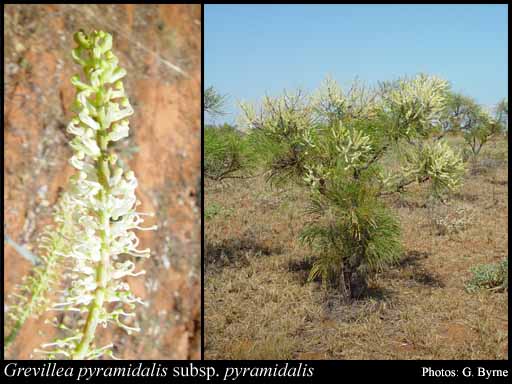- Conservation Code
- Not threatened
- Naturalised Status
- Native to Western Australia
- Name Status
- Current
Tree or shrub, 2-6 m high. Fl. white-cream-yellow, May to Jul. Sand, gravelly loam, skeletal sandy soils on sandstone, laterite, granite.







Scientific Description
Trees or Shrubs, 2-6 m high; branchlets glabrous, not glaucous. Leaves alternate, 120-410 mm long, 5-20 mm wide, glabrous, the hairs straight; lamina flat, twice or more divided, pinnately divided, divided to the midrib; lobes 50-290 mm long, 7-21 mm wide, the margins flat. Inflorescences axillary or terminal, white or cream; pedicels 1-1.5 mm long. Perianth 3.5-5 mm long; tepals all free after flower opens, glabrous; ovary glabrous, stipitate, the stipe 2-3 mm long; pistil 5-7 mm long, white, pollen presenter conical, style glabrous. Follicles glabrous, not viscid, dehiscent, 18-23 mm long. Flowers in May, June or July. Occurs in the Northern (N) or Eremaean (ER) Botanical Province(s), in the Great Sandy Desert (GSD), Pilbara (PIL), Northern Kimberley (NK), Victoria Bonaparte (VB), Dampierland (DL) or Ord-Victoria Plains (OVP) IBRA subregion(s).
Distribution
- IBRA Regions
- Central Kimberley, Dampierland, Great Sandy Desert, Northern Kimberley, Pilbara, Victoria Bonaparte.
- IBRA Subregions
- Fitzroy Trough, Keep, McLarty, Mitchell, Mount Eliza, Pentecost, Pindanland, Roebourne.
- IMCRA Regions
- Kimberley, King Sound.
- Local Government Areas (LGAs)
- Broome, Derby-West Kimberley, East Pilbara, Karratha, Wyndham-East Kimberley.